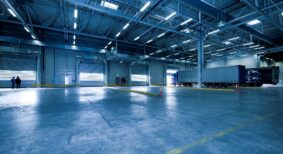Building technologies are commonly used industry networks that consist of equipment, systems, and software needed to power and operate buildings and homes. The ongoing maintenance of building technology keeps offices, shops, and houses safe and operational as they are utilized day to day.
The building technologies ecosystem is comprised of companies that manufacture, distribute, inspect, maintain, and repair crucial systems and technologies. By leveraging the appropriate service technology and integrated service tools, building technology operators can help maintain seamless and efficient field service so they can rest assured that buildings are safe and being properly maintained.
The impact of efficient building technology management
Many individuals do not realize the number of systems that contribute to a properly functioning building, be it an office, hotel, or school. Everything from HVAC/R, energy management, and security systems to electronics and major appliances need regular upkeep and routine inspections to ensure proper utility, not to mention repairs. Building managers must often deal with various original equipment manufacturers (OEMs), energy and service providers, and their siloed systems for addressing maintenance in the same building.
Juggling all these different parties can lead to miscommunication and over-complicated scheduling, the effects of which could cause building systems to fail when they are needed most. Schedule mishaps like missed repairs or servicing multiple systems simultaneously can be disruptive to building tenants and homeowners. By working with providers and leveraging integrated service solutions, building managers can properly coordinate the delivery, repair, and maintenance of their appliances and keep their industrial setups continuously operational.
Routine maintenance of building technologies is necessary to fulfill safety precautions and regulatory compliance measures, but it is also beneficial for improving our homes and businesses. More than 80 per cent of the country’s buildings are 20 years or older and waste 20 per cent of the energy they use. Service technicians, supported by schedule optimization technology, can ensure that equipment and systems are upgraded with newer, more efficient models before they reach the end of their lifecycle, saving future appliance and energy costs while reducing downtime between system installations.
Additionally, mobile field service tools equip service technicians with real-time access to the tools, processes, and information they need to complete their service jobs on the first try, as well as the ability to share automated updates with customers about upcoming installations, repairs, or inspections. This increased communication allows both property owners and service technicians to plan ahead and execute efficiently while leaving building and home functions undisrupted.
The benefit of digital tools for building technology organizations
Companies using building technologies in both residential and commercial properties can seize the opportunity to quickly boost job quality and workforce productivity of the technicians that inspect and repair equipment by leveraging cloud-based mobility tools to reduce unnecessary downtime and scheduling gaps. A properly managed workforce will ensure that critical systems are not serviced simultaneously, repairs are handled proactively, and property managers and homeowners are immediately notified of service appointments or routinely scheduled maintenance. Automatically integrating building technology maintenance into property management makes it easier to manage building systems and avoid risky and costly system failures.
Many organizations that install and service building technologies need to rely on contracted workforces in addition to their in-house employees to reach all their customers. Using both employees and contractors is known as a blended workforce, and it’s proven to be highly effective in field service. In fact, 73 per cent of companies with a blended workforce outperform those with employed-only staff.
However, managing a blended workforce without automated tools can often impede service and increase costs due to manual dispatching and scheduling. For example, HD Supply, one of the largest industrial distributors of HVAC equipment, appliances, and electrical items to owners of multi-family, hospitality, healthcare, and institutional facilities in North America, was able to implement field service management software solutions to do away with its manual processes and improve contractor onboarding, streamline technician dispatching, automate payments, and enable a more proactive customer experience.
By leveraging digital service tools, the building technologies ecosystem can improve workforce management, adhere to regulatory compliance, cut costs and energy waste, and foster a better customer relationship with building supervisors and homeowners. A fully integrated suite of service solutions provides an end-to-end experience that not only helps providers service their equipment, but also facilitates the process for property managers who need to keep buildings and homes operational.
Samir Gulati was appointed Chief Marketing and Product Officer at ServicePower in 2017, where he is responsible for all aspects of marketing and product management, including market strategy, product roadmaps, demand generation, product marketing, and corporate marketing. Samir brings over 25 years of experience in global product and marketing leadership roles in technology companies. He holds an MS degree in Computer and Information Science from the University of Pennsylvania and an MBA from the University of Chicago’s Booth School of Business.








